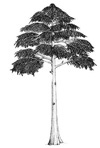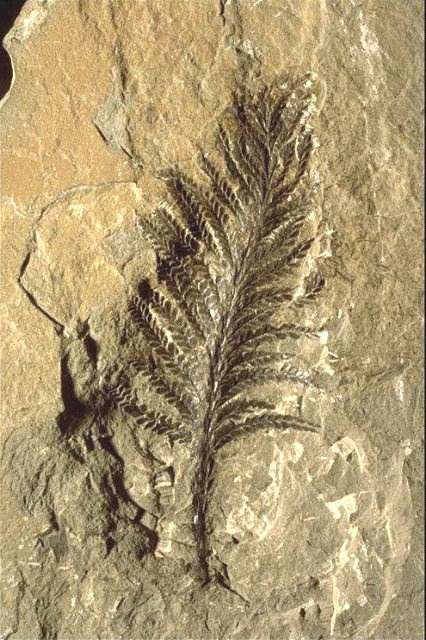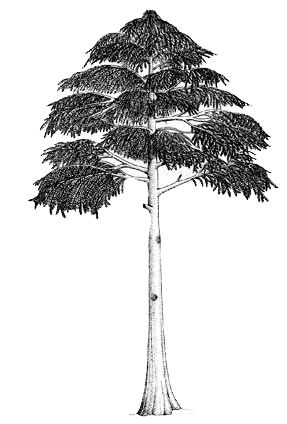Archaeopteris

 (84 kb) Its discovery at Miguasha dates back to the end of the 19th century, when the famed paleontologist J. William Dawson of McGill University wrote the first description of Miguasha flora. Spreading around the world during Upper Devonian time, Archaeopteris became the main constituent of Earth’s first forests.
(84 kb) Its discovery at Miguasha dates back to the end of the 19th century, when the famed paleontologist J. William Dawson of McGill University wrote the first description of Miguasha flora. Spreading around the world during Upper Devonian time, Archaeopteris became the main constituent of Earth’s first forests. Archaeopteris existed for only a few tens of million of years, but is well known to paleontologists and is recognized as the first plant truly worthy of the name “tree”. Reaching up to seven metres tall, its trunk was made of lignin and cellulose, and its structure was very similar to that of today’s conifers. It was topped by branches supporting fronds reminiscent of ferns, and these extended horizontally to capture sunlight.

 (24 kb)The plant is placed in the class of progymnosperms, a group that is regarded as ancestral to true gymnosperms, which include conifers.
(24 kb)The plant is placed in the class of progymnosperms, a group that is regarded as ancestral to true gymnosperms, which include conifers.Two different species, A. halliana and A. obtusa, grew in the Devonian Miguasha estuary region. A. obtusa is distinguished by its larger leaves. These species possessed both ordinary vegetative branches as well as fertile branches. The latter looked different and displayed clusters of sporangia bearing microspores and macrospores, meaning that Archaeopteris produced both male and female spores. This is therefore an example of heterospory, much like the pollen-producing plants of today. At Miguasha, the great fronds – well preserved in many levels in many layers of the Escuminac Formation – are plentiful, as are pieces of carbonized trunk. Petrified trunks of Archaeopteris are also known by the name Callixylon.
Interview with Patricia G. Gensel
![]() Open this page with video (1,6mo)
Open this page with video (1,6mo)
Note : For best viewing of this site, you will need this plugins: QuickTimeDownload QuickTime
Picture Description
Patricia G. Gensel talks about the fossil in her hands that she found along the Miguasha bank.
Reporter
So Mrs. Gensel you discovered that this morning ?
Patricia G. Gensel
Actually one of the other people did and showed it to me. This is a specimen of archeatris showing several of the branches with its typical for bully shape leaves and little ginko leaves.
Reporter
What’s the importance of that kind of fossil or plant fossil ?
Patricia G. Gensel
Well this one is actually a reprentative of one of the first trees that ever existed and also one of the first plants to have obvious laminate leaves of this type. Most of the plants before this time had stamps which branch many many times but did not have laminated photosynthetic structures.
And that is how it all began!
Site map | Feedback | Links | Sources | Credits
Archaeopteris
<< Protobarinophyton | Spermasporites >>




